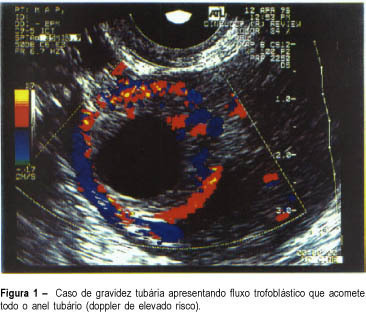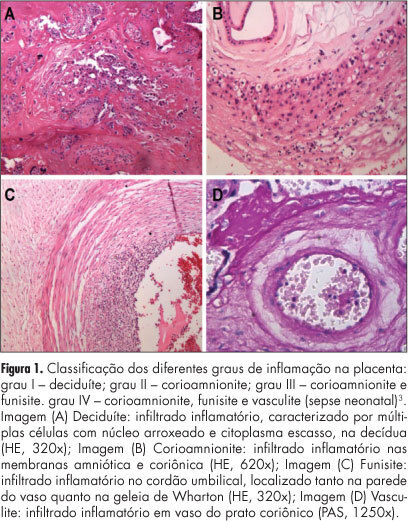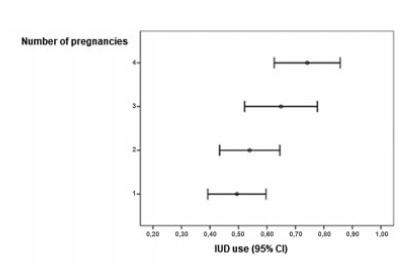Summary
Revista Brasileira de Ginecologia e Obstetrícia. 2001;23(3):153-157
DOI 10.1590/S0100-72032001000300004
Purpose: to evaluate the clinical and therapeutic aspects of septic abortion, and to identify a group at high risk for complications. Methods: a retrospective study of 224 cases of patients with septic abortion was conducted. Age, parity, clinical and ultrasonographic diagnosis, and therapeutic data were collected from medical charts. The information about induced abortion was provided by the patients and/or their relatives and accompanying persons. Septic abortion was diagnosed based on clinical data, leukocyte count, adnexal and uterine pain, and purulent cervical discharge. Results: the average age of patients was 21.4 ± 6.2 years. Forty-five (20.1%) patients were 19 years old or less. Sixty-six (29.5%) were primiparous and 55 (24.5%) were secundiparous. In 143 (63.8%) women it was the first abortion. The most common clinical signs were hemorrhage (83.9%) and fever (61.1%). Of the total of patients, 37.9% declared that they had an induced abortion, 33.9% declared spontaneous abortion and 28.2% did not inform. Hysterectomies were performed in five cases. No hysterectomy was performed in the group with spontaneous abortion (2.2%), which had a reduced number of complications: (3.9% versus 11.8% in the group with induced abortion), p<0.05. Conclusion: septic abortion is a more serious problem in patients who declared induced abortion.
Summary
Revista Brasileira de Ginecologia e Obstetrícia. 1999;21(3):153-157
DOI 10.1590/S0100-72031999000300006
Purpose: to evaluate the efficacy of color Doppler in the prediction of results of the systemic treatment of unruptured ectopic pregnancy with a single dose of methotrexate. Methodology: twenty patients with a diagnosis of ectopic pregnancy were included in the study. The inclusion criteria were: hemodynamic stability, adnexal mass < 5.0 cm and decline of the titers of beta-hCG less than 15% in an interval of 24 h. The exclusion criteria were hepatic or renal disease and blood dyscrasias. Follow-up was by serial determinations of beta-hCG on days 4 and 7 after the beginning of the treatment, and weekly until the titers were negative. The patients were classified into 3 groups according to color Doppler: high risk (trophoblastic flow covering more than 2/3 of the mass), medium risk (when trophoblastic flow compromised 1/3 to 2/3 of tubal mass) and low risk (when trophoblastic flow covered less than 1/3 of the mass). Results: the success of the treatment with a single dose was 75% (15/20); when a second dose of MTX was used, the success rate was 85%. When comparing color Doppler with the results of the medical treatment, we had high risk in 4 patients and in all the treatment failed; medium and low risk in 16 patients, and in 15 the treatment was successful. Conclusion: color Doppler showing high risk indicated an unfavorable situation for the medical treatment with MTX, while medium and low risk in color doppler were favorable situations for the clinical treatment. However, these results should always be analyzed in association with the evolution curve of the beta-hCG titers.

Summary
Revista Brasileira de Ginecologia e Obstetrícia. 2011;33(4):153-156
DOI 10.1590/S0100-72032011000400001
Summary
Revista Brasileira de Ginecologia e Obstetrícia. 2010;32(4):153-155
Summary
Revista Brasileira de Ginecologia e Obstetrícia. 2013;35(4):153-158
DOI 10.1590/S0100-72032013000400004
PURPOSE: To analyze the relationship between physical activity and body composition in menopausal women. METHODS: The study included 62 menopausal women aged 50 years or more (61.2±7.6). The practice of physical activity was assessed with an accelerometer and is reported as minutes per week of low physical activity and moderate plus vigorous physical activity, and total physical activity in counts. Lean mass and total fat mass were assessed by dual-energy X-ray absorptiometry, and are reported as percentages. The relation between body composition variables and physical activity was evaluated by Spearman and Pearson correlation. Comparisons between groups were performed using the independent t test and Mann-Whitney test. RESULTS: The age group 59 years or older had higher mean values of total physical activity in counts (1,307.081 versus 2,843.840) and of minutes per week of moderate-vigorous physical activity (273 versus 156 minutes). Women who completed 150 minutes or more of moderate-vigorous physical activity had significantly lower total fat mass (43.8 versus 47.2 kg), higher lean mass (53.8 versus 49.6 kg) and lower BMI (27.7 versus 30.5 kg/m²) when compared to those with less than 150 minutes of physical activity per week. Only time spent in moderate activities showed a significant negative correlation with the percentage of total fat (r=-0.26, p<0.05), whereas total physical activity in counts correlated with the percentage of lean body mass (r=0,30), percentage of total fat (r=-0.32), trunk fat (r=-0.29), and BMI (r=-0.32); all correlations were statistically significant at p<0.05. CONCLUSION: menopausal women aged 50 years or more who spent more minutes in moderate and vigorous activity and higher total physical activity counts showed lower fat mass and higher lean mass.
Summary
Revista Brasileira de Ginecologia e Obstetrícia. 2012;34(4):153-157
DOI 10.1590/S0100-72032012000400003
PURPOSE: To evaluate the influence of maternal complications, prematurity, fetal anthropometric parameters and conditions of the newborn on different degrees of chorioamnionitis. METHODS: We analyzed 90 placentas from deliveries performed at the General Hospital of Triângulo Mineiro Federal University with a diagnosis of inflammation in the anatomopathological exams. We reviewed the medical records to obtain relevant maternal and fetal information. The infections were classified as grade I - deciduitis; grade II - chorioamnionitis; grade III - chorioamnionitis and vasculitis; grade IV - neonatal sepsis and grade V - fetal death and pneumonitis. RESULTS: Among the pregnant women analyzed, 50.0% had no complications, 15.0% had ruptured membranes, 15.0% urinary tract infection, 7.5% hypertensive disorders, 7.5% transvaginal infection, 5.0% hematogenous infection, and 11.1% other complications. More than a half the neonates were males and 72.2% were born at term. Analysis of the degree of chorioamnionitis showed that 56.7% had grade I, 22.2% grade II, 4.4% grade III, 10.0% grade IV, and 6.7% grade V. Data were analyzed statistically by the Χ2 test for qualitative variables and by the Spearman test for correlation analysis. The higher grades of chorioamnionitis were observed in cases of maternal complications. We observed negative correlations between all parameters and the degree of fetal chorioamnionitis, which were significant regarding weight, length, thoracic circumference and Apgar score in the first and fifth minutes. CONCLUSIONS: The different patterns of chorioamnionitis were related to different maternal and fetal clinical features, affecting the life conditions of the newborn and the severity of morphological lesions found in stillbirths.

Summary
Revista Brasileira de Ginecologia e Obstetrícia. 2022;44(2):154-160
To analyze the profiles of women who accepted and who refused the insertion of the copper intrauterine device (IUD) postpartum and to learn the motivations related to the refusal of the method.
Cross-sectional study with 299 pregnant women. The women were informed about the possibility of inserting a copper IUD postpartum and were questioned about their interest in adopting or not this contraceptive. All participants answered a questionnaire with information relevant to the proposals of the present study. The sample size was limited to the number of devices available for the present study.
A total of 560 women were invited to join the present study and 299 accepted. Out of the 299 women included in the present study, 175 accepted the copper IUD and 124 refused. As the number of pregnancies increased, the IUD acceptance rate raised (p=0.002), especially between the groups with 1 and with ≥ 4 pregnancies (p=0.013). Regarding the desire to havemore children, the women who planned to have more children were more likely to refuse the method than the ones who did not (p<0,001).
Women with multiple pregnancies and desire to not have more children were more likely to accept the copper IUD. The profile of those who refused was first pregnancy and desire to have more children. Among the three most frequent reasons reported for copper IUD rejection, two responses stood out: no specific justification and desire to have more children.

Summary
Revista Brasileira de Ginecologia e Obstetrícia. 2016;38(3):154-159
To correlate the expression of high-risk HPV E6 mRNA with pap smear, colposcopy, and biopsy results in women with high grade squamous intraepithelial lesion (HSIL).
A cross-sectional study was performed on women referred for primary care services after cytological diagnosis of HSIL. We evaluated the expression of E6/E7 mRNA of HPV types 16,18,31,33, and 45 and correlated the results with those of Pap smear, colposcopy, and biopsy. For amplification/detection of mRNA E6 / E7 we used NucliSENSEasyQ kit to detect HPV mRNA by polymerase chain reaction with primers/ probes for HPV types 16, 18, 31, 33, and 45.
Out of 128 valid tests, the results of 30 (23.4%) tests were negative and 98 (70%) tests were positive. Only one type of HPV was detected in 87.7% of the E6/E7 mRNA positive cases. HPV16 was detected in 61.2% of the cases, followed by HPV33 (26.5%), HPV31 (17.3%), HPV18 (10%), and HPV45 (4.08%). Pap smear tests revealed that the E6/E7 test was positive in 107 (83.8%) women with atypical squamous cells - high grade (ASC-H), HSIL, or higher. The E6/E7 test was positive in 69 (57.5%) specimens presenting negative cytology results. When analyzing the association with colposcopy results, the frequency of positive E6/E7 results increased with the severity of the injury, ranging from 57.1% in women without colposcopy-detected injury to 86.5% in those with higher levels of colposcopy findings. Of the 111 women who underwent biopsy and E6/E7 testing, the E6/E7 test was positive in 84.7% of the women who presented with lesions of cervical intraepithelial neoplasia (CIN) grade 2 or higher. Finally, 41.2% of women with a negative biopsy presented a positive E6/E7 test.
E6/E7mRNA expression was higher in women with HSIL and CIN grade 2 or higher.